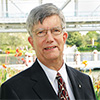Opinion
AUG 01, 2013
Patient-Centered Care: The New Stampede?
Download PDF

By Richard P. Mills, MD, MPH, Chief Medical Editor, EyeNet
Sometimes I get that Rip van Winkle feeling that something has happened around me and that it happened all of a sudden, as though I had been asleep. I hadn’t noticed it coming, did not note its arrival, certainly ignored its proliferation, and in an instant became aware that it had changed my world. Worse, others around me acted as though it has always been there, and I must be a dolt for not noticing. Well, that’s been my experience with the currently hot topic of patient-centered care. My brief online research revealed that the term “patient-centered care” began to go viral in health care circles around the change of the millennium, when the Institute of Medicine recommended it as a vehicle for crossing the “Quality Chasm.”
As I first heard the term over a decade ago, I had a hard time understanding what the flap was about. I mean, what had I been providing my patients since I entered practice: “not-patient-centered care”? Maybe “doctor-centered care”? My family would argue against that! Firmly believing that I had been providing patient-centered care, and would continue to do so, I let the concept slide the slippery slope from aware to oblivious. There, it stewed away in my subconscious mind until I finally figured out what was so different about the patient-centered care that is now all the rage from what had been the previous norm. It wasn’t the doctors who had been avoiding patient engagement and empowerment; rather, it was the medical system, which was now evolving to support us. The changes happening around us are predominantly systems related. And as the system changes to become more patient centered, the doctors will need to communicate with the system in different ways—but this doesn’t involve a fundamental change in the way doctors and patients relate.
I predict that physicians in general, and ophthalmologists in particular, will not have much difficulty thriving in the new patient-centered care system. Of course, we will need to adapt to some new paradigms. For example, the outcomes that will matter the most are the ones that matter to the patient. Accordingly, intraocular pressures and monocular visual fields will assume less importance as satisfaction with the patient experience moves more to the forefront. I admit that I used to think that patients would routinely give high scores to doctors who provided them limousine rides to surgery and a bouquet of flowers on arriving home, and low scores to those who were shy on amenities. But if you ask the survey questions correctly, patients are really quite perceptive about their experiences. That is especially true as you drill down to the level of a single encounter. As a result, a whole new science of measuring patient satisfaction is developing. Measurement instruments that actually correlate with our traditional medically defined outcomes are just now coming of age.
Let us not despair that our focus as doctors is still directed toward outcomes as traditionally defined, while patients and payers are newly focused on patient-defined outcomes. As we confront the new system, our security blanket is the traditional physician-patient relationship. Patients still care greatly about what we say; they are just more interested in being active participants, rather than passive recipients as they were in the past. This change in emphasis may be a stampede, but we cowboy (cowperson) ophthalmologists should be able to corral it.